Category Archives: Tree Care
A Fruit Tree Orchard Beautifully Pruned
The Emerald Ash Borer Tree Killer—What it is and what to do about it
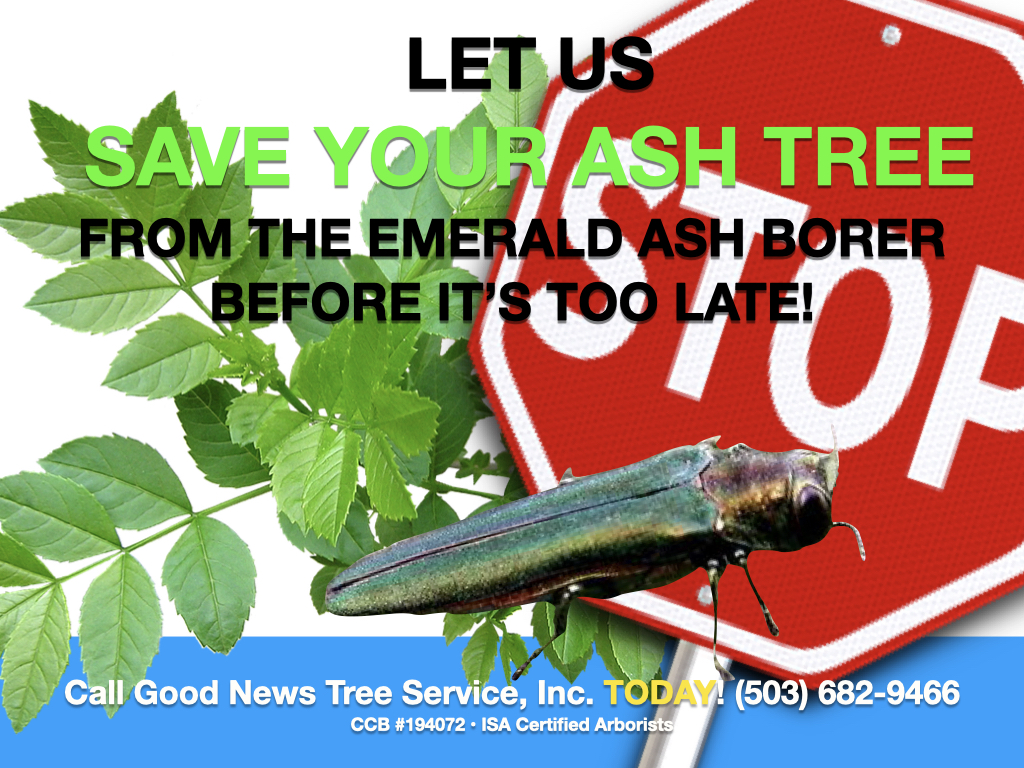
There’s a new tree pest in town called the emerald ash borer (or EAB) and it wants to kill all the ash trees in this area.
The Emerald Ash Border (or EAB) was discovered in the summer of 2022 in hundreds of trees in the Portland Metra area and is spreading rapidly throughout the region.
According to the Oregon Department of Agriculture, the EAB “is a highly destructive invasive forest pest” that has killed over 100 million ash trees so far in the US. It moves quickly, and can cause nearly complete mortality of ash trees within about several years after detection. There are no effective means of eradicating the EAB once the insect is established in an area. Once a tree canopy has been thinned or been reduced by 20 to 30 percent or more by EAB feeding activity, it is too late to save the tree. It will die.
Good News Tree Service, Inc. can save your ash tree from the EAB beetle before it’s too late. CALL US TODAY FOR MORE INFO!
Frequently Asked Questions About the EAB
What trees species does the Emerald Ash Borer attack?
The EAB attacks all varieties of ash or Fraxinus trees regardless of variety, size, age or the health status of the tree. It also attacks the white fringetree (Chionanthus virginicus) and cultivated olive trees (Olea europaea).
How quickly does EAB spread?
The beetle can fly several miles (sometimes up to 15 miles) from one infested tree to one that is not. However, the most likely means by which the EAB spreads is thought to be by hitchhiking on vehicles and by translocated firewood. That’s why the EAB is more likely to spread to trees in areas along major freeways and highways, which opens up the entire Willamette Valley to the EAB.
How quickly will the EAB kill my tree?
An ash tree usually dies within four to six years after initial infestation. For the first couple of years of EAB infestation, it may be impossible to detect EAB activity in a tree, which is why trees worth saving need to be treated earlier rather than later.
What are the signs that my tree has EAB?There are several including:
- Thinning of a tree’s crown.
- Branch dieback.
- Woodpecker activity.
- One-eighth inch sized capital “D” shaped holes in the bark of the tree.
- Splitting bark.
Progression of EAB symptoms in a tree, which may occur a couple of years after the tree has already been infested include:
- Year one: no crown thinning.
- Year two: moderate crown thinning.
- Year three to four: heavy crown thinning and death.
What are my options when it comes to EAB?
- Do nothing. Then wait for your tree to die as you unwittingly facilitate the spread of the EAB to your neighbors’ ash trees.
- Remove the tree. If your ash tree is small (smaller than six inches in diameter), we recommend removing it and replacing with another species of tree. The cost to remove an ash tree and its stump can be $1,500 or more. This does not factor in the diminished value to your property that the removal of a mature tree will cause. In Portland, for example, the assessed value of mature ash tree is $3,12013. Plus, this not cover the cost to replace the tree, which is often a requirement in many municipalities.
- Treatment. Considering treating high-value ash trees with an insecticide, which is a proven way of protecting your tree. Keep in mind that this will cost hundreds of dollars and must be repeated every few years, thus requiring a long-term commitment.
Is there anything I can do to protect my ash tree?
Other than treating your tree with a systemic insecticide, the answer is no.
How effective are treatments?
If an ash tree is treated in time, usually before 20 to 30 percent defoliation occurs, the survival rate is about 99 percent. After that level of defoliation occurs, will die the tree thus becomes a standing hazard requiring removal.
What is the cost to treat my ash tree for EAB?
The cost to treat an average sized ash tree (20 inch diameter at breast height) is around $300 to $400 (or less for quantity discounts). Generally one can treat an ash tree for 20 to 30 years for the same cost as removing it and replacing it with another tree. Often local municipalities require that you replace your tree especially if it is a street tree, which adds to the overall cost of removing a tree.
How often do I need to treat my tree?
An ash tree will need to be treated only once very two to three years, and will need to be treated for the life of the tree.
How are the treatments applied and are they environmentally safe?
Yes! Absolutely. The systemic insecticide we use is injected directly into the tree’s vascular system (like and IV), so it all goes into the tree, thus there is no residue present to harm pets or people. The product we use also doesn’t harm bees or other pollinators.
More Info About EAB
Oregon State University Extension Service— general info: https://extension.oregonstate.edu/forests/cutting-selling/what-do-about-emerald-ash-borer-recommendations-tree-protection-eab
Oregon State University—EAB identification guide: https://catalog.extension.oregonstate.edu/sites/catalog/files/project/pdf/em9160.pdf
OSU Extention Service–general info and more links: https://extension.oregonstate.edu/announcements/emerald-ash-borer-quarantine-adopted-washington-county-effective-dec-20-2022-may-16
OSU Extention Service:
https://extension.oregonstate.edu/forests/cutting-selling/what-do-about-emerald-ash-borer-recommendations-tree-protection-eab
Footnotes
1–EAB confirmed in Oregon: https://www.aphis.usda.gov/aphis/newsroom/stakeholder-info/stakeholder-messages/plant-health-news/eab-or
2–Oregon Department of Agriculture: https://www.oregon.gov/oda/programs/IPPM/Documents/EmeraldAshBorer.pdf
3– Oregon Department of Forestry: https://static1.squarespace.com/static/58740d57579fb3b4fa5ce66f/t/60772a17647ad466155f74a7/1618422303582/March+2021_EAB.pdf
Tree Planting Site Analysis, Planting and Monitoring Specifications
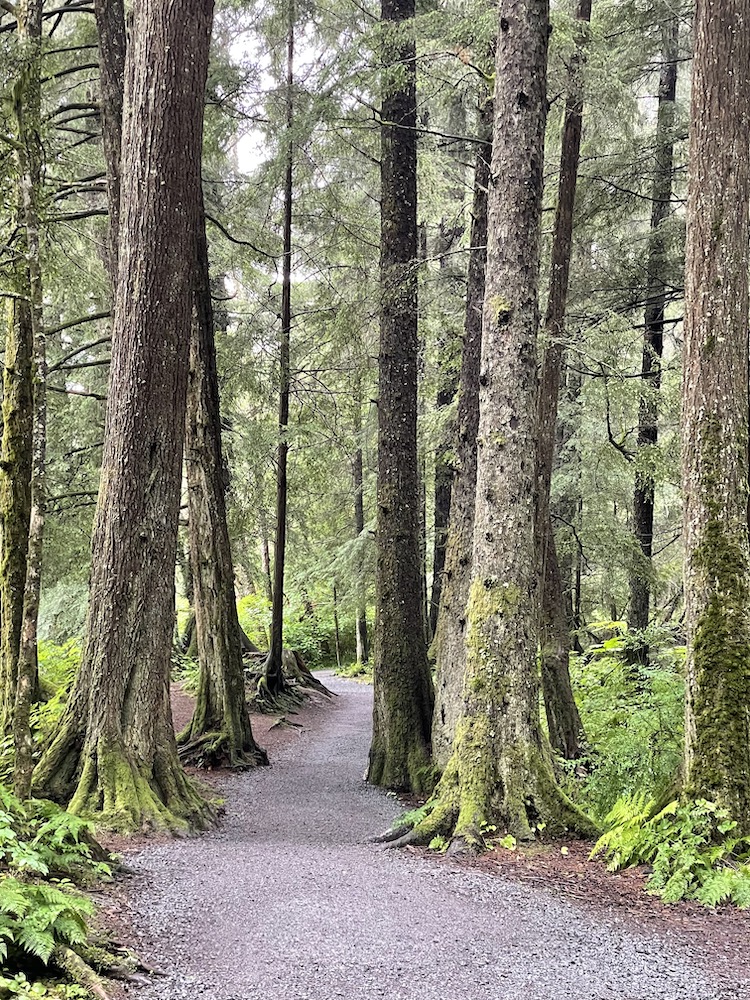
By Nathan Lawrence,
Owner of the Good News Tree Service, Inc. in Wilsonville, OR since 1985 — ISA Certified Arborist • ISA Tree Risk Assessment Qualified • State of Oregon Licensed Commercial Pesticide Applicator • OSU Master Gardener
The following information and recommendations pertain to the northern Willamette Valley areas of western Oregon.
Planting the right tree in the right location will help to minimize plant stress (both biotic and abiotic), pests and mortality, thus ensuring better tree performance for years to come. This is a wise use of resources, economical, good for the well-being of the community and for the local environment and the earth in general. This also means that fewer chemical pesticides will be required in caring for the tree, which is a good thing for everyone and everything.
To accomplish these goals requires intentional planning and tree planting strategies. Prevention is the best medicine! Property owners cannot afford to pay someone simply dig a hole and drop a tree in it, and then walk away after the tree planter has collected their money and moved on. Garbage in garbage out! If the tree was not planted with intentional forethought with an eye on long term tree survival, it is likely the tree will under-perform, require expensive (often chemical) treatments and may even die. If the tree is planted with strategic and intentional forethought, and then properly cared for subsequently, it will be more likely to perform healthily for generations to come
The following are some things to consider before planting a tree on a site.
Site Evaluation
It is essential to determine the soil volume of the planting area, so that the appropriate tree can be chosen for that specific site. The smaller the soil volume, the smaller the tree (at mature size) that can be planted in that area. Conversely, the larger the soil volume, the larger the tree (at mature size) that can be planted. I recommend that the tree size–soil volume ratio be based on various studies of a tree’s soil requirement at its mature size. If a tree doesn’t have the proper soil volume, its roots will not be able to uptake the amount of soil moisture and nutrients they need to be healthy, nor will they be able to anchor themselves sufficiently against wind storms.
Here is a list from based on the above mentioned soil volume study for urban trees of approximate tree size and suggested soil volume requirements. These numbers are based on the tree’s crown spread and diameter at breast height (or dbh) at the tree’s mature size. (One online calculator for determining the soil volume needed for a tree can be found at https://greenblue.com/gb/resources/soil-calculator/.)
- 14 foot crown spread by 4 inches dbh needs 100 to 307 cubic feet of soil volume.
- 21 foot crown spread by 8 inches dbh needs 200 to 698 cubic feet of soil volume.
- 27 foot crown spread by 12 inches dbh needs 300 to 1144 cubic feet of soil volume.
- 32 foot crown spread by 16 inches dbh: needs 1000 to 1607 cubic feet of soil volume.
- 36 foot crown spread by 20 inches dbh needs 1300 to 2034 cubic feet of soil volume.
- 39 foot crown spread by 24 inches dbh needs 1400 to 2512 cubic feet of soil volume.
To determine the average soil volume of a street tree planting strip, first measure the width of the strip (from sidewalk to street curb), then the average depth of the soil (two feet or less), then the length of strip. For example,
- If the tree’s roots spread to a radius from the trunk of 10 feet with 2 feet of soil depth in a 5.5 foot wide planting strip, then the soil volume in that area is 220 square feet.
- If the tree’s roots spread to a radius from the trunk of 20 feet with 2 feet of soil depth in a 5.5 foot wide planting strip, then the soil volume increase to 440 square feet.
- If the planting strip is 8 feet wide and the tree’s roots spread to a radius from the trunk of 10 feet with 2 feet of soil depth, then our soil volume is 320 square feet.
- If the planting strip is 8 feet wide and the tree’s roots spread to a radius from the trunk of 20 feet with 2 feet of soil depth, then our soil volume increase to 640 square feet.
Another way of determining the soil volume is to calculate the soil volume based on the size of tree’s canopy. One to three cubic feet of soil is needed for every square foot of crown projection. This is the anticipated area under the drip line of the tree at expected maturity. This formula does not apply to fastigiate and columnar habit trees. The soil volume requirement can be calculated for narrow form trees by basing the canopy diameter on the parent tree’s natural growth form.
The volumes generated in the above lists is an estimate and should only be used to generate an order of magnitude as a guide or target volume. Furthermore, there is a wide range of soil volumes recommended by soil scientists, botanists and landscape architects. The bottom line? The smaller the tree the better for most street tree situation, since recommended soil volumes are seldom high enough to support healthy trees long term.
Please note that if the soil is only 18 inches deep, then the soil volume will be even less. In many cases in planting strips along roads and sidewalks, it is not uncommon to hit compacted, impermeable gravel in various spots in the tree’s root zone at only a depth of 6 to 12 inches.
In light of the reality that street trees are seldom planted with the optimal soil volume and soil fertility they would prefer, the manager of the street tree will need to monitor the tree to ensure that it has the proper nutrients needed to sustain maximum tree performance. A planting site that sub par to the tree’s optimal needs may necessitate occasionally feeding the tree if it begins to show signs of stress. This needs to be factored into the long term care of street trees.
Soil Type, Texture and Structure
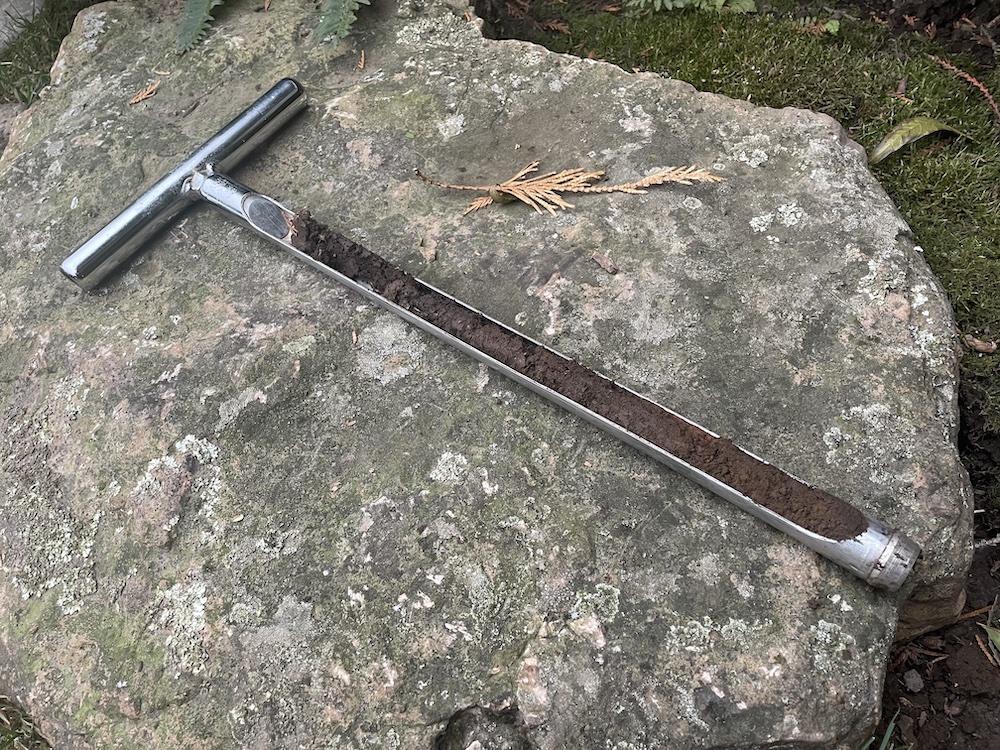
Next, we must conduct a soil test to 12 inches deep to determine soil type, texture and structure, so that the right tree is planted in the soil type that it prefers. This involves determining the approximate proportion of sand, clay, silt (and loam, which is a combination of the previous three soil types).
Continue readingWe’re Much More Than Hackers and Wackers!
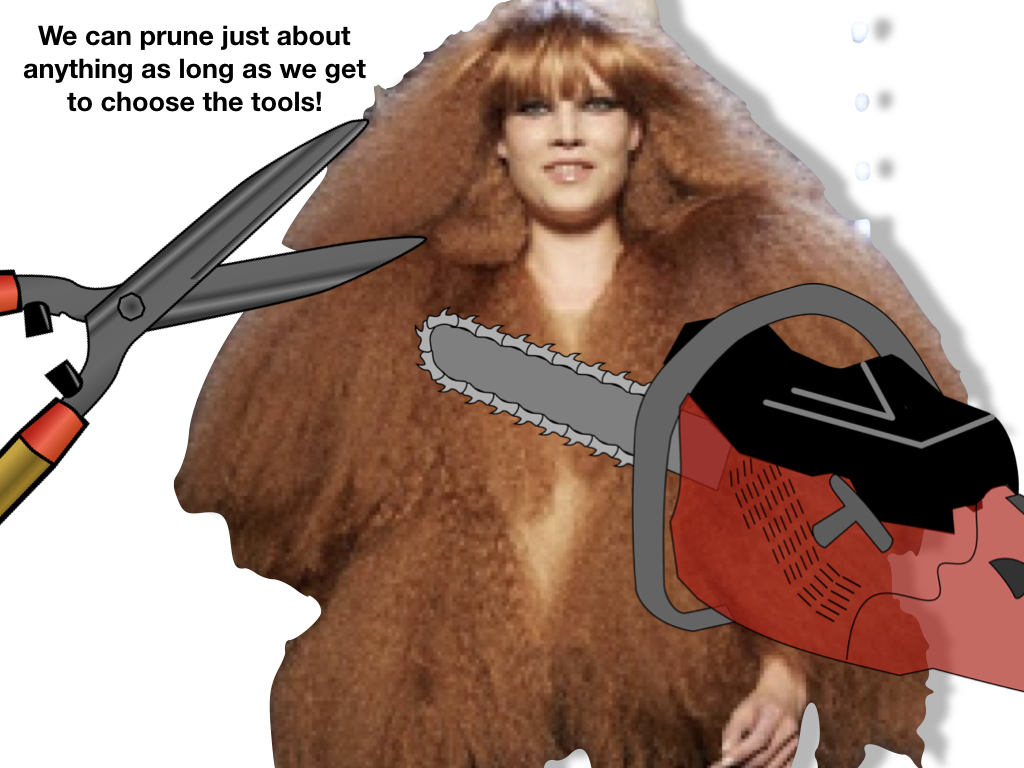
At Good News Tree Service, Inc. of Wilsonville, Oregon, we’re much more than out-of-work loggers (although Nathan has experience way back when in that industry as well) who have fallen into residential tree removal. In fact, we come from a solid three generation, more than six decade family business with a background in the nursery, landscape, horticultural, farming and arboricultural business. And not wanting to rest any any laurels we may have, we’re constantly gaining education to keep up with new information and techniques in tree care.
As part of our continuing education, Jared (Nathan’s son and Good News Tree Service, Inc. Crew Supervisor and tree climber) and I just returned from the Pacific Northwest Chapter of the International Society of Arboriculture’s annual training conference at Coeur d’Alene, Idaho. For four days we sat in classes taught by some of the nation’s leading experts on a number of subject including scientists from several universities.
As ISA Certified Arborists, both Nathan and Jared are required to take continuing education classes to maintain our certifications, and conferences such as these are an excellent way to pick up the required CEUs quickly. Between the two of us, we spent some 35 hours in classes and workshops.
Why do we go to these events? For several reasons. We love what we do and are passionate about trees. We’re also curious and want to keep learning about our trade. We want to keep up with the last science and technology. We want to provide the highest quality service and the best and latest information on tree care to our clients. Plus, it’s just plain fun hanging out with a bunch of other tree geeks!
What did we learn about at the latest PNW-ISA tree conference? There were classes on wide range of subjects including soil science, plant pathology, business practices, rope climbing, chainsaw maintenance, invasive pests, tree physiology and biology, tree protection and preservation and more.
Here are some photos of this our latest adventure in the art and science of tree care.
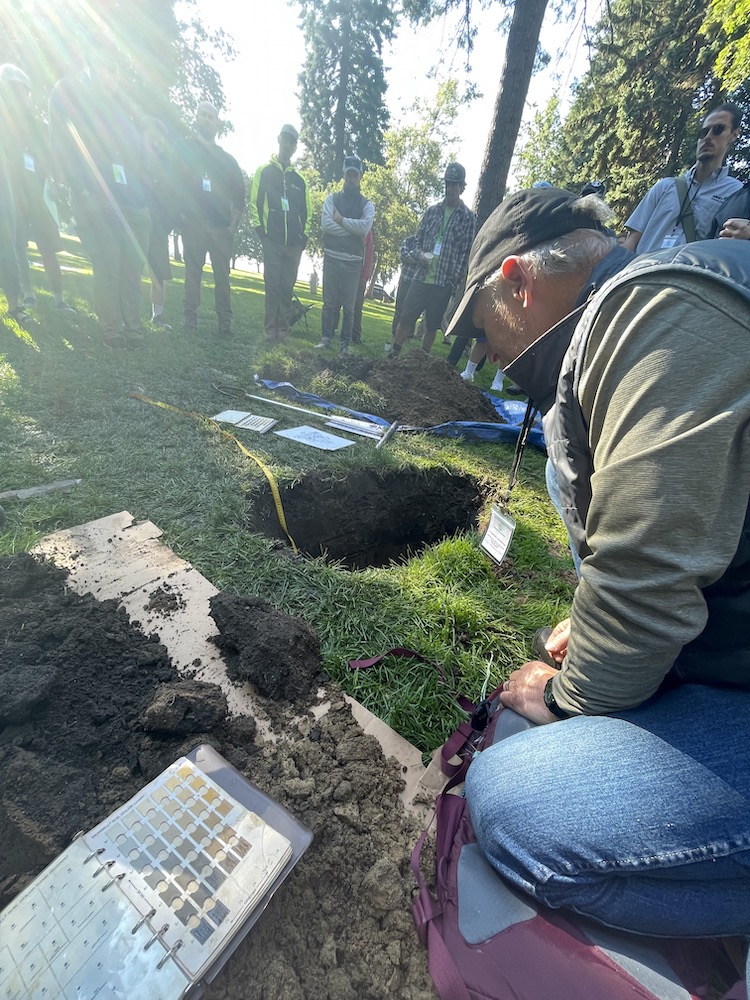
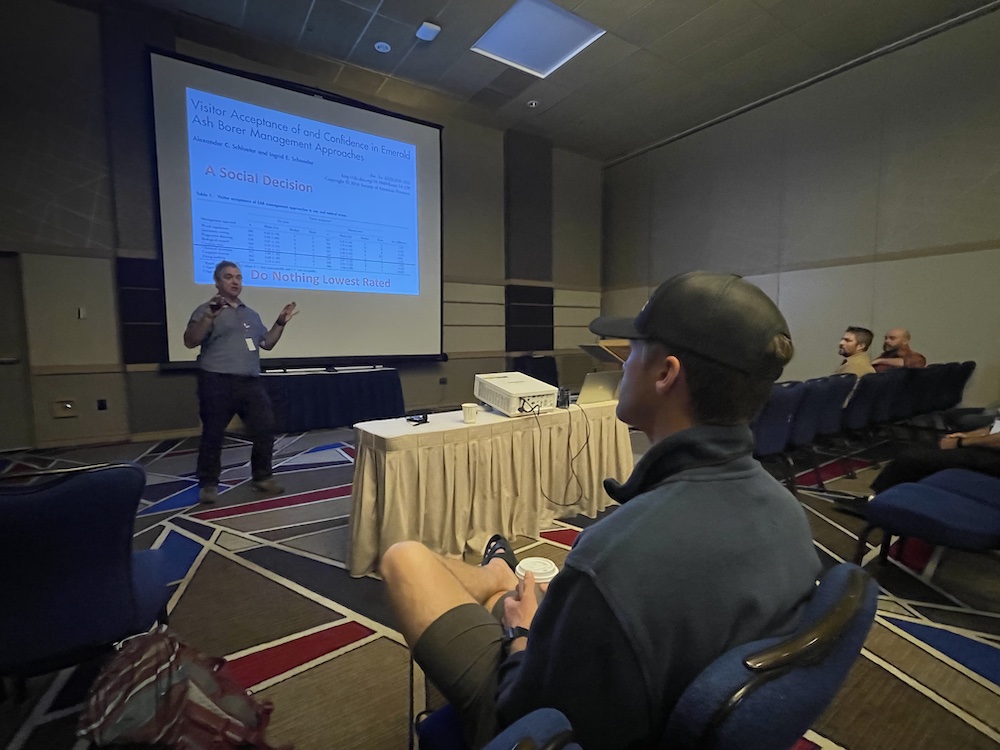


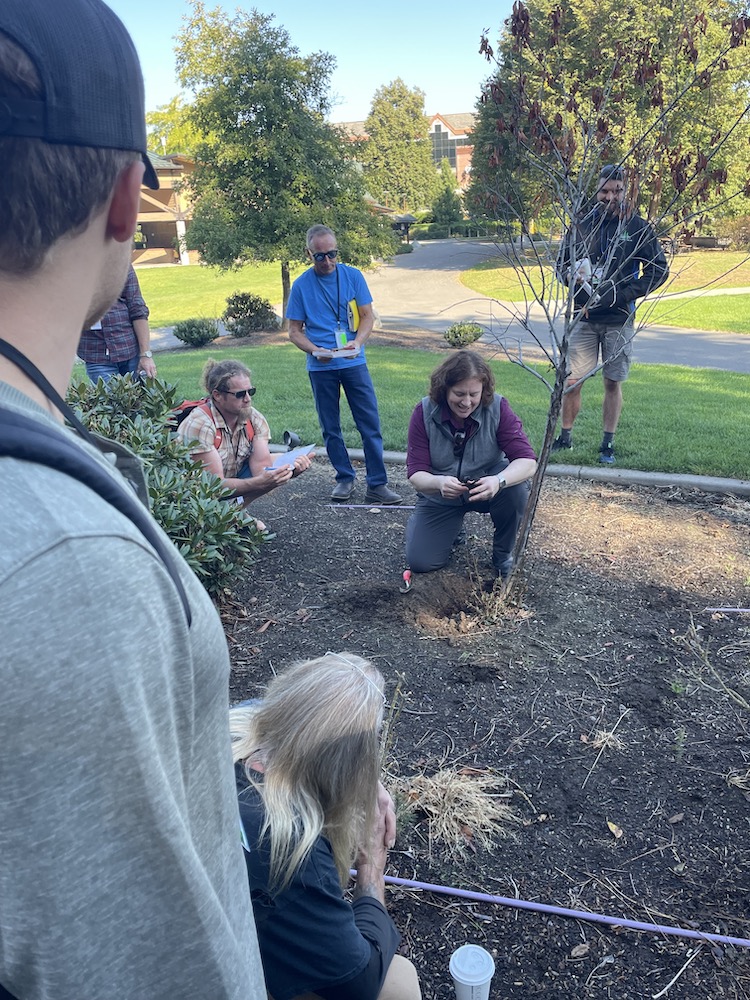
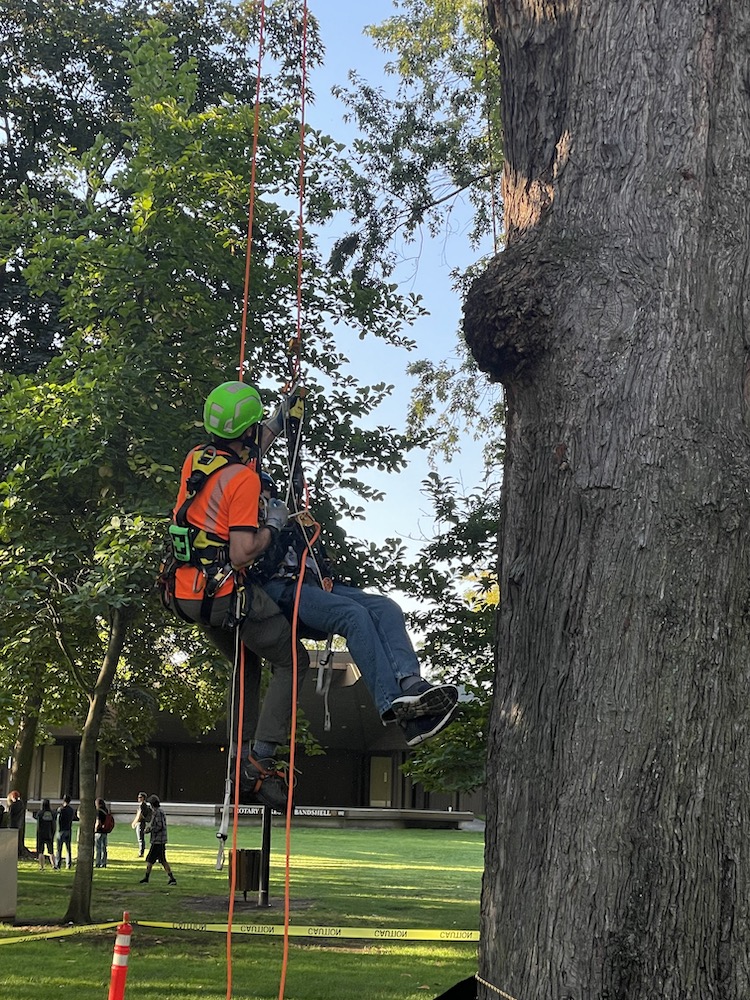
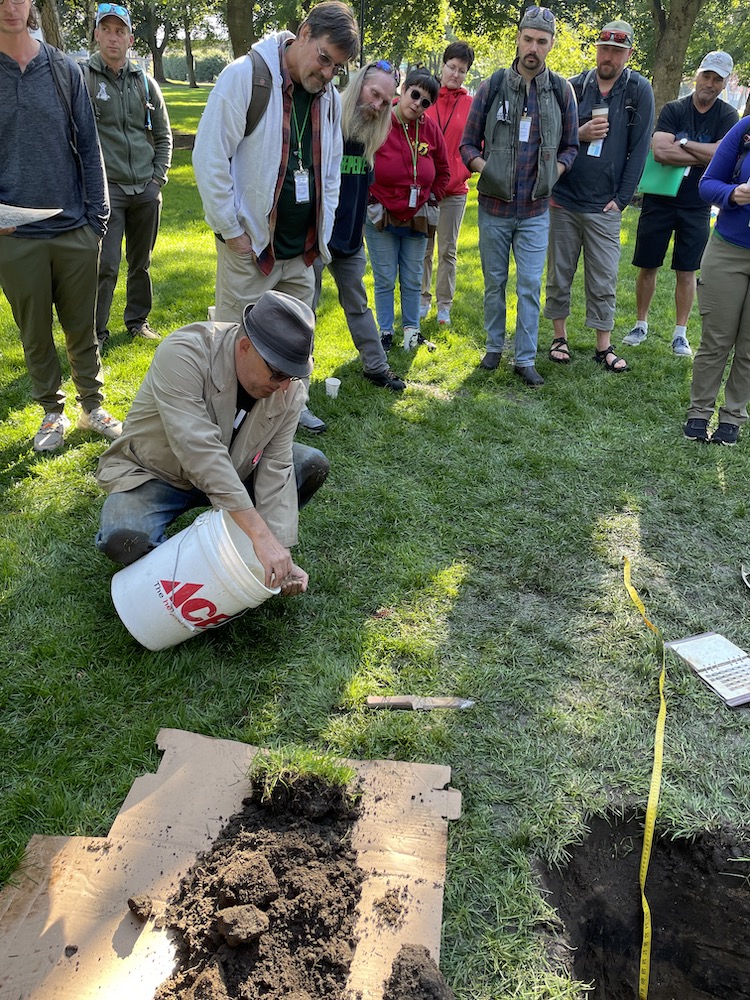
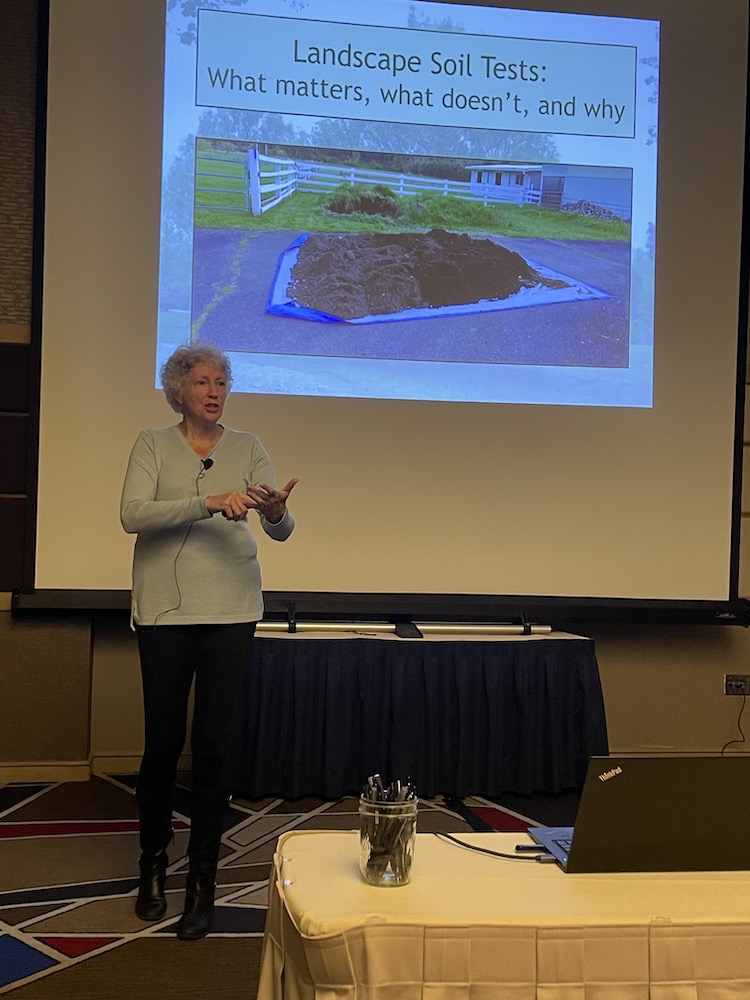

April in the Garden—A To Do List

This guide is tailored for the western valleys of Oregon and Washington
YOU can help to make the world a better, a more friendly, loving and beautiful place by being a good steward of the spot on this earth, your garden, that you have been given the privilege of borrowing for a time. It is our hope that the following to-do list will help you to do just that.
Nathan, the Treevangelist, urges you to treat your spot on this planet like your own personal Garden of Eden. May it become your personal paradise. This is your divinely mandated responsibility. Your trees, shrubs, flowers and the wildlife in your yard will pay you back as they express their smiling appreciation to you and yours by radiating their love, joy and beauty bursting forth with vibrant and verdant life. Below is a to-do list to help fulfill this mission.
Let the show begin starting with the flora fireworks! This month, the garden is popping with life as the naked deciduous trees and shrubs don their seasonal leafy attire and celebrate the arrival of spring as they burst forth with all those pent up life-force juices as the stars of the plant world prance onto the garden stage to impress us with their performance. They’re beginning to flauntingly parade themselves down the garden’s catwalk with their fantasmic plethora and rainbowic panoply of star-spangled colors from the lowly perennial primrose to the ostentatiously regal Mount Fuji cherry tree. Meanwhile, the birds are serenading us with their twitterpational love songs, and even the croaking frogs with their basso profundo tones are jumping into the garden’s three ring circus and trying to steal the show. So what more can be said? It’s time to get up and get out there and to join choir by donning your garden shoes and gloves and picking up your handy tools as nature’s orchestra play its halleluYah chorus!
While you’re at it, take a few moments and scroll back through this same Good News Tree Service, Inc. blog and check out the archives for any tree and plant care articles that you may have missed. Also check out our YouTube channel at https://www.youtube.com/channel/UCvcu2lL9NpgoXQtUFYyQShw, our Facebook page at https://www.facebook.com/GoodNewsTreeService/ and our main website at https://goodnewstree.com. Please enjoy!
Readers’ suggestions on how to improve this list are gladly solicited. If you, the reader, have any suggestions for additions to this month’s list, please put them in the comments section of this article, and I will add them to the list. Thank you in advance! — Nathan
Tree and Shrub Care
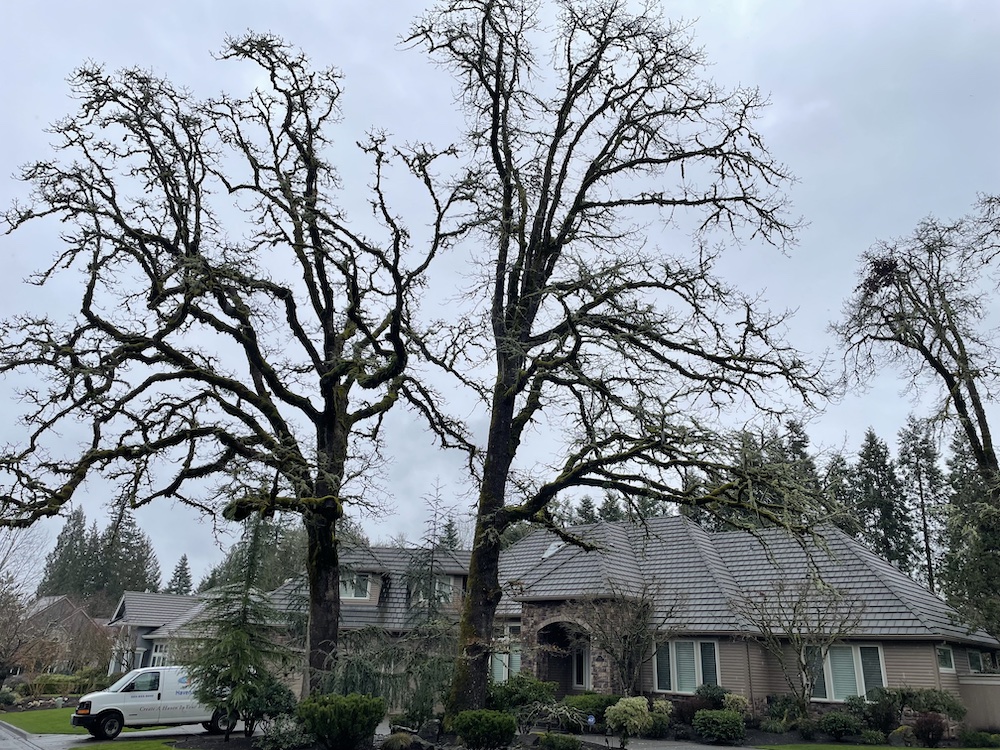
- Fruit tree pruning. It’s time to finish pruning your fruit trees for fruit production. Also finish pruning your grapes, cane and trailing berries once the threat of major frost is past. Fruit trees can be pruned any time of the year, but it’s best not to prune them while they have flowers or fruit on them for fear of destroying part of your fruit harvest.
- Finish planting your fruit trees. By getting them in the ground in the winter or early spring, they’ll have time to acclimate to their new home before summer comes.
- Mulch. Apply two to three inches of mulch around all trees and ornamental shrubs. This helps to fertilize the plants and feed the soil, and also protects them against weed growth and loss of water when the warmer weather returns.
- Pine tree pruning. Finish pruning coast/shore pines (Pinus contorta) and Scotch/Scots pines (Pinus sylvestris). These two pines are especially susceptible to the sequoia pitch moth whose larvae burrow into the tree trunks during the growing season (April through September) causing the trees to exude large amounts of unsightly pitch globules. While this seldom kills the tree, the bleeding of sap is not good for the overall health and vigor of the tree. It is advisable, therefore, not to prune these pine trees during the growing season, since the pruning cuts attract the moth, which then lays eggs on the tree, which hatch into tree-burrowing larvae. Pruning should be done on your pines from November to March.
- Plant or transplant trees and shrubs. Early spring is still a good time to plant or transplant ornamental trees and shrubs. Cooler weather means less transplant shock to the plants, and over the winter and spring, they will have time to begin to acclimate to their new environment before the stress of the next summer season occurs.
- Pruning of large trees. Most trees in the temperate western valleys of Oregon and Washington can be pruned anytime of the year. If you’re not sure what to do, or how to do it, call Good News Tree Service, Inc. for a consultation, pruning lessons or to have them do the pruning for you.
- Pruning of ornamental shrubs. Early in the spring before a lot of new growth starts is a good time to do major pruning (called heading back) of rhododendrons (or rhodies) and other similar ornamental shrubs back to latent buds in trunks and stalks. Do this before spring growth begins in the near future. Prune fast growing ornamental shrubs that are beginning to look shabby. You may need to prune them again in the early summer for a more neat and manicured look.
- Reparative pruning. Repair winter damaged to trees and shrubs.
- Tree and shrub removal and stump grinding can be done all year long.
- Trees. Have an ISA Certified Arborist with an ISA Tree Risk Assessment Qualification (like Good News Tree Service, Inc.) inspect your large trees for the potential of failure due to weak root systems and defects in trunks and branches. This is best done when the leaves are off the trees.
Plant Health Care
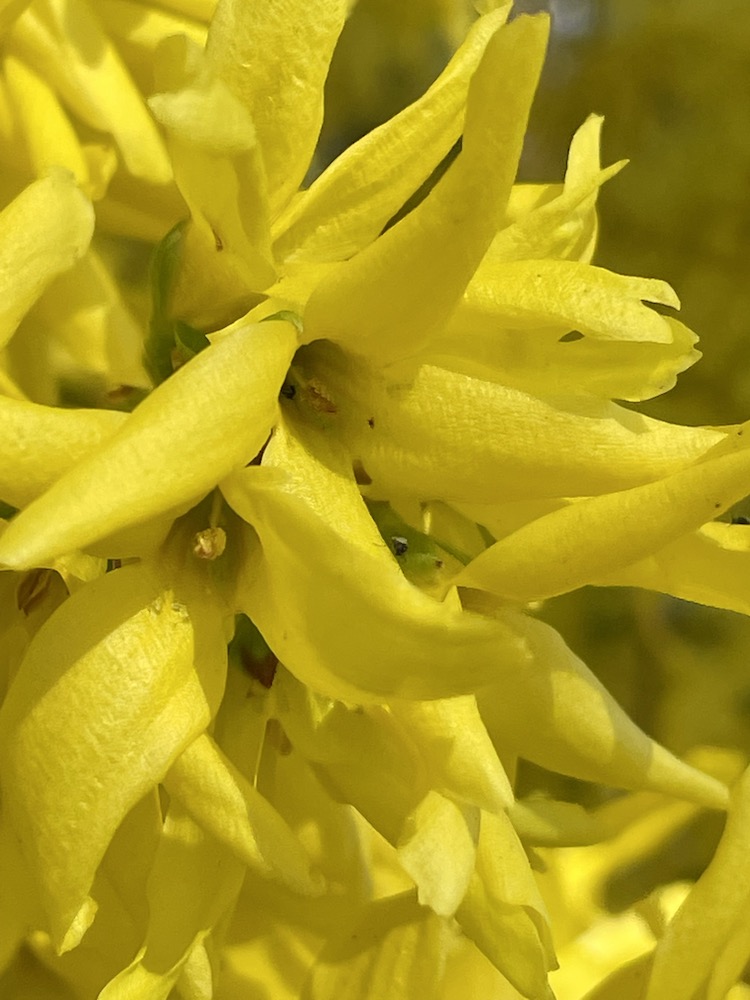
Good News Tree Service, Inc. provides full plant health care services as listed below.
- Apple scab on ornamental crabapple and fruiting apple trees. The first visible symptoms occur on leaves in spring as pale, yellowish, water-soaked spots the size of a pinhead. These enlarge, becoming darker and smoky in appearance, later taking on an olive shade and ultimately a brownish black color. Spots may be any shape but are frequently circular. Young infections often show a radiating spread of fungal tissue through the leaf, and such areas later appear as irregular, brown-colored infections. Diseased leaves can be curled and distorted and often drop early. This fungal disease can also move into the fruit to produce a scabby effect, hence the name “apple scab.” Several fungicidal sprays are required to control this disease just prior to flowering and after flowering.
- Arborvitae twig blight (Thuja occidentalis). Spray in the spring and early summer when new growth starts at two week intervals.
- Birch rust fungus. Occurs on leaves. Spray before symptoms appear on 10 to 14 day intervals—4 apps if infestation is severe.
- Cherry tree brown rot blossom blight (Monilinia fructicola). Make 3 foliar applications starting at bud break and at 14 day intervals.
- Coryneum blight (shot hole fungus) or cherry and plum leaf spot. This leaf blight affects ornamental and flowering cherry, plum and prune trees. Apply fungicide in the spring at flower petals fall, shuck fall and two weeks later.
- Crabapple leaf blight. Apply fungicide as the leaf clusters are just opening up and make several more applications subsequently as per label directions.
- Deep root fertilization. Trees and ornamental shrubs—deep root fertilize to promote lush, healthy-looking and vigorous crown growth. Urban soils tend to lacking in many of the nutrients that trees and shrubs need to survive. Many are malnourished or are starving to death, which is why they don’t look radiantly healthy are struggling with pest issues. Deep root fertilization helps to promote healthy-looking and pest-resistant trees and shrubs. The best time of the year to do this is in the spring and fall.
- Dogwood anthracnose. Begin spraying with a fungicide at bud break and continue at 10 to 14 day intervals.
- Dormant spraying of fruit trees. Continue fungal sprays until after flower petals have dropped off.
- Magnolia bacterial blight. Apply one fungal spray in fall and twice in spring near budbreak.
- Lawns. Fertilize lawns.
- Leaf blights. Spray trees and shrubs for fungal leaf diseases (e.g. powdery mildew, leaf blights, dogwood anthracnose, needle blights, etc.).
- Monitor trees and shrubs for insect pests. When piercing and sucking plant pests (e.g. aphids, lacebugs, scales, weevils, mites, etc.) hatch varies each year depending on when the warmer weather begins. Usually, hatching of plant pests begins from early to late April. When consistent warm weather begins to occur, start monitoring plants for insect nymphs and adults. If necessary, plan a course of action to treat your trees and shrubs against these pests.
- Pear rust. Apply fungicide in early spring about bloom time as the orange fungal telium (pl. telia) begin to appear.
- Photinia leaf spot. Spray with a fungicide as new shoots are developing at 30 day intervals.
- Piercing-sucking insects. Continue applying systemic insecticides against piercing sucking insects (aphids, lacebugs, scales, weevils, etc.) via soil injections (one treatment gives season-long control).
- Pine dothistroma needle blight. Apply fungicide at just before bud break and a few weeks later.
- Powdery mildew. Apply a fungicides as soon as symptoms appear. Best efficacy occurs if used before symptoms appear. Use fungicide at 7 to 14 day intervals, or more often if conditions warrant it. If a plant is known to have had powdery mildew previously, apply as buds start to open.
- Spider mites will start to become active as the weather warms. Systemic insecticides are available against this pest.
- Tent caterpillar. Apply systemic pesticide for season-long control.
- Verticillium wilt. Soil drench in the spring. Maples are especially susceptible to this fungal root disease as are cherries and plums.
- Willow twig blight (scab). Apply two or three applications beginning when new leaves first appear at 10 to 14 day intervals.
Elsewhere in the Garden
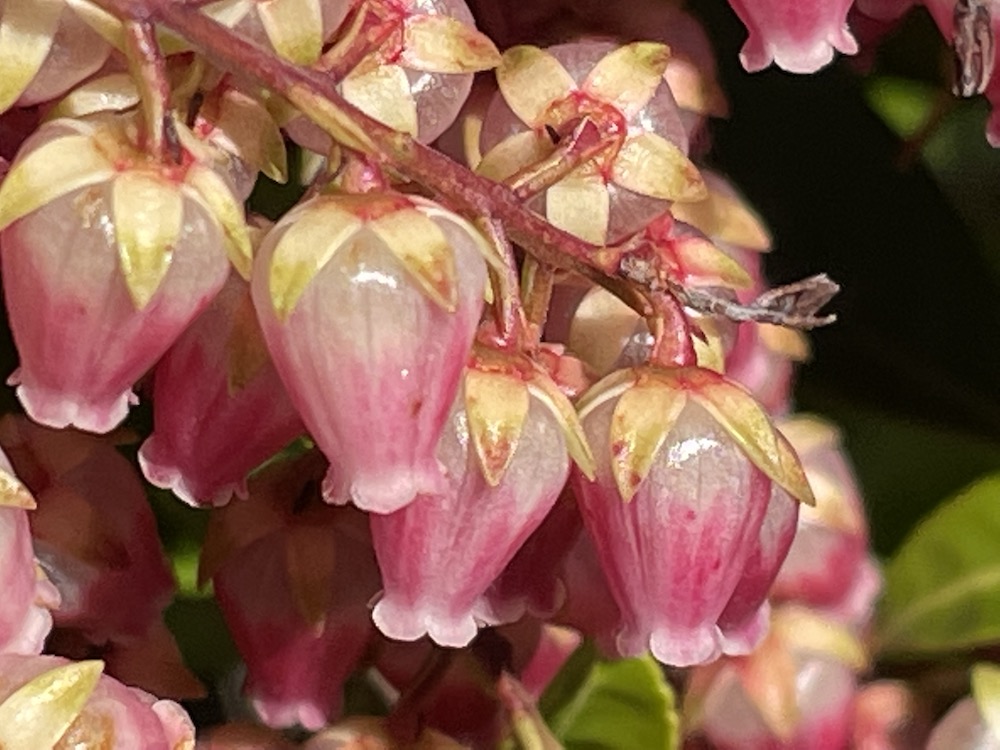
- Feed the birds. Continue to keep your bird feeders full. Why? Even though we’re now past the winter season and there is more food available for the birds, having these feathery friends frequent your garden serves several purposes. During dry spells, keep your bird bath watering hold full of fresh water. Caring for the local wild birds brings life and excitement to your backyard by turning it into a bird-friendly sanctuary. The birds will thank you for your generosity by providing you with hours of entertainment, and by eating insect pests that harm your ornamental trees and shrubs. You can find excellent bird care products and advice from knowledgeable and caring professionals at your local Backyard Bird Shop.
- Ferns. Cut off last year’s fronds from ferns as new fiddleheads begin to emerge.
- Flower planting. Begin planting annual and perennial flowers.
- English ivy control. Though a decorative evergreen ground cover and climbing vine, English ivy is considered an invasive species, since it spread so rapidly and birds disperse its seeds everywhere. It will soon take over your yard and garden if not contained. Even worse, it grows up into trees, and even though it is not parasitic in that it takes nutrients from its host tree, it can eventually choke smother a tree foliage depriving the leaves of life-giving sunlight. The loss of foliage can stress and even eventually kill a trees. This is why it is imperative to cut ivy away from the base of your trees. The ivy climbing up into a tree can be killed simply by cutting through its stalks at the base of the tree. This can be done any time of the year.
- Mulch. Apply two to three inches of mulch (e.g. bark dust, garden compost or wood chips) on all of your shrub beds. Covering bare dirt areas in your yard with mulch helps to prevent soil compaction from rains, and weed growth, and helps to enrich our heavy clay soils.
- Slugs. Put slug bait around your flowers and tender plants such as hostas, primroses and other slug loving plants.
- Vegetable gardening. Start making plans for your vegetable garden. Once the soil has dried out, you can begin working it for planting our veggies. Usually this will occur in late April or early May and sometimes later depending on the weather. The earlier you plant, the sooner you’ll be feeding on delicious veggies from your own garden!
Rose Care
- Fertilization. Roses are flowering machines and need regular fertilizing. They require three fertilizations per year. First in April, then at the end of June, and finally in late August. Fertilize roses with something like a 15-10-10, 20-20-20 or 30-15-15 fertilizer. Use a variety of types of fertilizers for best results.
- Pests. Spray or treat roses with a fungicide as needed preventively to insure protection against fungal pathogens such as black spot, powdery and cottony mildew, rust and spot anthracnose. Apply a fungicide only after the rose has put out several inches of new growth. Excellent choices of both organic and inorganic fungicides are available at your local garden center or nursery. Some fungicides require spraying in the early spring as the new growth is emerging. Major plant pests include mites, aphids, thrips, rose slugs, leaf rollers, rose midge, spittle bug and sawfly. Determine what pest or disease your rose has, do some research online if necessary to ascertain this, and then visit your local garden center or nursery to find the right product for the job. Always read and follow all label directions. It’s the law!
Lawn Care (April or May)
- Overseed bare spots. When the weather begins to warm up, but are not too hot and there is still regular rainfall, and when the grass begins to grow, it is an excellent time to overseed bare or thin spots in your yard. Fall is the best time of the year to reseed bare areas of your lawn, while spring is the second best time.
- Start mowing. Begin to mow your grass every week or as needed. For the best results, do not remove more than one-third of the top growth of your grass at a time. Grass can be kept shorter during cooler weather, but when the hot summer weather begins, it is less stressful on the grass to allow it to remain at about two to three inches tall. This also helps the grass to choke out any weeds that might try to grow up through it.
- Weed control. Annual weeds, such as crabgrass, grow from seed each spring. A well-timed application of preemergence herbicide to stop them from growing is called for at this time of the year. A good guideline is to spread the preemergence herbicide as forsythia blooms in your area start to drop.
- Fertilization. Feeding your lawn at least couple of times a year is a must. One fertilization in the spring and one again in the fall is the minimum requirement to maintain a healthy lawn.
Happy gardening!


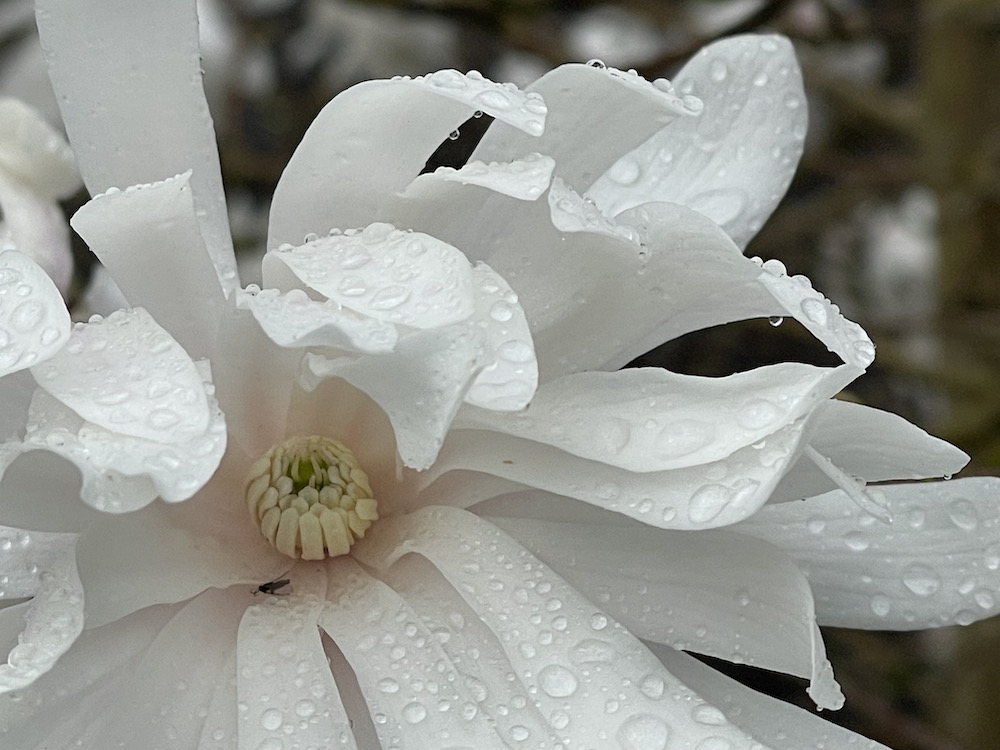
January in the Garden—To Do List
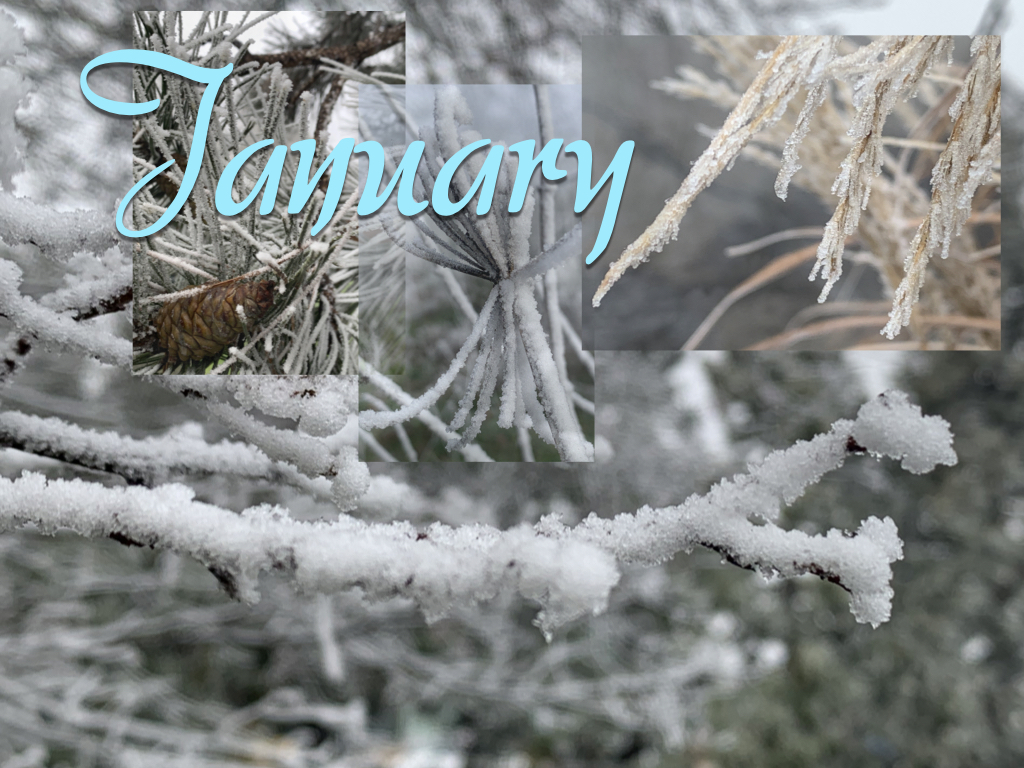
This guide is tailored for the western valleys of Oregon and Washington.
YOU can help to make the world a better, a more friendly, loving and beautiful place by being a good steward of the spot on this earth that you are privileged to be borrowing for a time—your garden. Nathan, the Treevangelist, urges you to treat your spot on this planet like your own personal Garden of Eden paradise. Then notice the joy that it will bring to you! This is your divinely mandated responsibility. Your trees, shrubs, flowers and the wildlife in your yard will express their smiling appreciation back to you and to others as they radiate love, joy and beauty bursting forth with vibrant and verdant life. Below is a to do list to help you to do just that.
For newcomers to the valleys of western Oregon, this fall and winter may seem to be wetter than usual due to the almost non-stop rain that has been falling on our thirsty ground. However, for those of us who have lived around here all of our lives, NEWS FLASH: This year has been more typical of past Pacific Northwest fall and winter seasons. Okay, in all honesty, we’ve probably had a little more rain than usual. Since October I have emptied probably at least 12 inches of water out of my rain gauge—maybe more. But I’m not complaining, and neither have many of our local trees that have literally been dying of thirst for the past few years. For them, this has been a welcome respite from an otherwise drought stricken and forlorn, if not seemingly God-forsaken, region. To be sure, rain is a divine, heaven-sent blessing for which we would all be better off were we to as enlarge our hearts by offering a prayer of thanksgiving to the Almighty Creator and divine Benefactor above, who is the source of all good things.
In the spare time that you have while not tending your garden, we cordially invite you to scroll back through this same Good News Tree Service, Inc. blog and check out any of our past tree and gardening articles that you may have missed. Also check out our YouTube channel at https://www.youtube.com/channel/UCvcu2lL9NpgoXQtUFYyQShw. I am regularly adding new videos for your education and pleasure. Please enjoy!
Readers’ suggestions on how to improve this list are gladly solicited. If you, the reader, have any suggestions for additions to this month’s list, please put them in the comments section of this article, and I will add them to the list. Thank you in advance!
— J. Nathan Lawrence (fourth generation Oregonian, OSU Master Gardener, ISA Certified Arborist, ISA Tree Risk Assessment Qualified, Oregon Dept. of Agriculture Licensed Commercial Pesticide Applicator)
Tree and Shrub Care

- Fruit tree sanitation. To prevent possible spread of leaf diseases, rake up and remove leaves from around the base of fruit trees.
- Fruit trees. You can start pruning your fruit trees and continue all the way up until February. This is also a good time to reduce the height of overgrown fruit trees, since they are likely to produce fewer water sprouts now then when pruned in the spring.
- Rake and dispose of ornamental tree leaves, or better yet, compost them and then spread the decomposed leaves back onto your shrub beds as a mulch next year.
- Storm proof your larger trees. With the advent of winter storms and the potential damage that they may inflict upon your trees, have an ISA Certified Arborist with an ISA Tree Risk Assessment Qualification (like Good News Tree Service, Inc.) inspect your large trees for the potential of failure due to weak root systems and defects in trunks and branches. This can be done anytime of the year, but now, before the winter storms hit, is an excellent time to proactive assess the condition of your trees for potential limb and trunk breakage.
- Large trees. After each major weather event, check your trees for damage such as broken or hanging limbs. If you have concerns or questions about your trees, have an ISA Certified Arborist with an ISA Tree Risk Assessment Qualification (like Good News Tree Service, Inc.) inspect your large trees for damage or the potential of failure due to weak root systems and defects in trunks and branches.
- Plant or transplant trees and shrubs. After the cold, seasonal rains have started is a good time to plant or transplant ornamental trees and shrubs. Cooler weather means less transplant shock to the plants, and over the winter and spring, they will have time to begin to acclimate to their new environment before the stress of the next summer season occurs.
- Prune your trees and shrubs. This is a good time to start pruning your deciduous trees and shrubs after the leaves have fallen and a tree’s branching structure is clearly visible making pruning easier. If you’re not sure what to do, or how to do it, call Good News Tree Service, Inc. for a consultation, pruning lessons or to have them to the pruning for you.
- Prune coast or shore pines (Pinus contorta) and Scotch or Scots pines (Pinus sylvestris). These two pines are especially susceptible to the sequoia pitch moth whose larvae burrow into the tree trunks during the growing season (April through September) causing the trees to exude large amounts of unsightly pitch globules. While this seldom kills the tree, the bleeding of sap is not good for the overall health and vigor of the tree. It is advisable, therefore, not to prune these pine trees during the growing season, since the pruning cuts attract the moth, which then lays eggs on the tree, which hatch into tree-burrowing larvae. Pruning should be done on your pines from November to March.
- Mulch trees and shrubs. Apply two to three inches of mulch around all trees and ornamental shrubs. This helps to fertilize the plants and feed the soil, and also protects them against weed growth and loss of water when the warmer weather returns, and helps to insulate the roots against cold weather in the winter.
- Water your plants. Are you serious? In the winter time? Maybe. Because of climate change, rain is not always falling as regularly and frequently as it used to. For the past few years during the winter months, it is not uncommon to go several weeks with little or no rain. This means that shrubs or trees planted earlier in the season may need a drink of water from time to time during these dry times. This is because their roots aren’t established yet and therefore don’t have the water uptake capabilities that established plants have. The symptom of lack of water, as usual, is drooping and wilting leaves.
Elsewhere in the Garden

- Put slug bait around winter flowers.
- Rake and dispose of ornamental tree leaves, or better yet, compost them and then spread the decomposed leaves back onto your shrub beds as a mulch next year.
- Mulch your shrub beds. Put a two to three inches of mulch (e.g. bark dust, garden compost or wood chips) around perennials and other plants that might be sensitive to subfreezing weather. Also, spread a fresh layer of mulch (e.g. bark dust, garden compost or wood chips) on all the bare dirt areas in your yard to prevent soil compaction from rains, to prevent weed growth and to enrich and help to condition your heavy clay soils. Adding a layer of mulch (several inches thick) over any tender perennial flowers, especially if the weather turns extremely cold and the ground freezes, will prevent death of flowers like dahlias.
- Cut English ivy off of the base of trees. (This can be done any time of the year.)
- Feed the birds. Dutifully maintain your bird feeders. As winter comes, birds have a harder time finding food. This includes both seed and suet feeders. During dry spells, keep your bird bath watering hold full of fresh water. Caring for the local wild birds brings life and excitement to your backyard by turning it into a bird-friendly sanctuary. The birds will thank you for your generosity by providing you with hours of entertainment, and by eating insect pests that harm your ornamental trees and shrubs. Remember to feed your local humming birds that overwinter in our region. If possible, fill your humming bird feeders with a syrup that contains only 100 percent sugar (e.g. sucrose or dextrose) minus any artificial sweeteners, red dyes and other chemicals. Your birds will be healthier for it. You can find excellent bird care products and advice from knowledgeable and caring professionals at your local Backyard Bird Shop.
Rose Care
- Prune your roses down by about one-third and remove any dead flowers and dead or diseased canes.
- Heavily mulch your roses. Organic mulch (such as wood chips, rotted compost, rotted manure) is the best. While barkdust helps to hold moisture in the soil, it contains little or no nutrients, so it doesn’t feed the soil and thus won’t feed your roses.
- For more information on the care of roses, go to the Portland Rose Society website at https://www.portlandrosesociety.org/all_about_roses.html.
Lawn Care
- Perform mower maintenance. This is a good time to take your mower to repair shop for some annual engine maintenance and blade sharpening. Do it in the winter when the repair shops are not busy and to avoid the spring rush so that you will be ready to mow your grass in the spring.
- Other lawn care. Avoid walking on extremely soggy or heavily frost-covered lawns to avoid damage to your grass.



